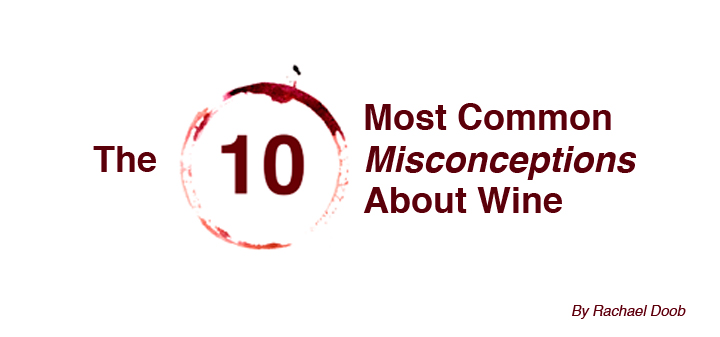
When it comes to wine, there are lots of myths and misinformation out there that have become unquestioned truths. Grape Collective sets the record straight and debunks ten common misconceptions about wine.
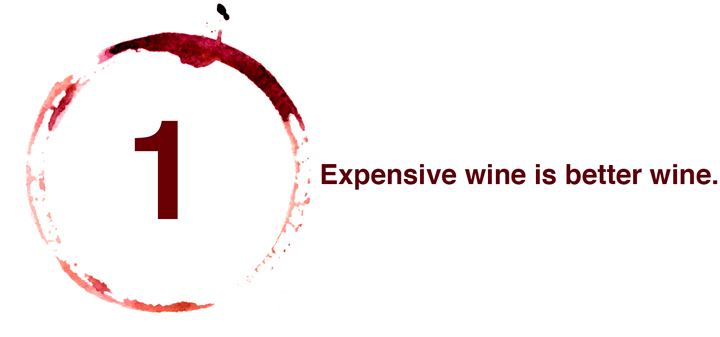
It is often true that expensive wine is high quality wine. However, the price of wine is affected by more than just quality. It can depend on other factors such as the labor costs to produce the grapes and wine, the consumer perception regarding the wine, the cost of the oak barrels used to age the wine, and the cost of the label design and packaging of the wine. In addition, wines from less popular grapes, locations, and producers can offer high quality at a lower price point.
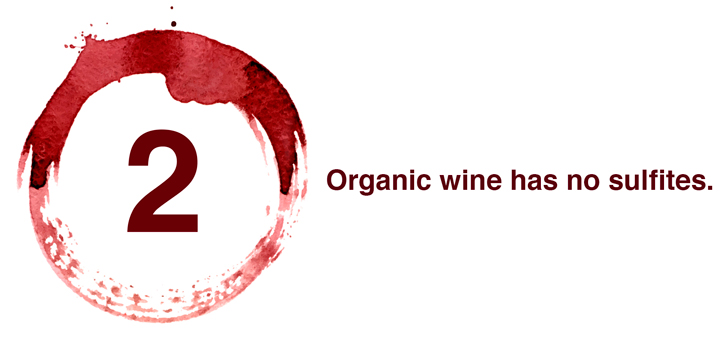
All wines will naturally contain sulfites because sulfites are produced during the fermentation process. Some winemakers add extra sulfites to wine in order to prevent oxidation and to stabilize the wine. Wines labeled organic do not have these added sulfites. The maximum sulfite level legally allowed for US wine is 350 ppm (parts per million). The majority of wines average about 125 ppm and organic wine has a natural sulfite level of 10-20 ppm.
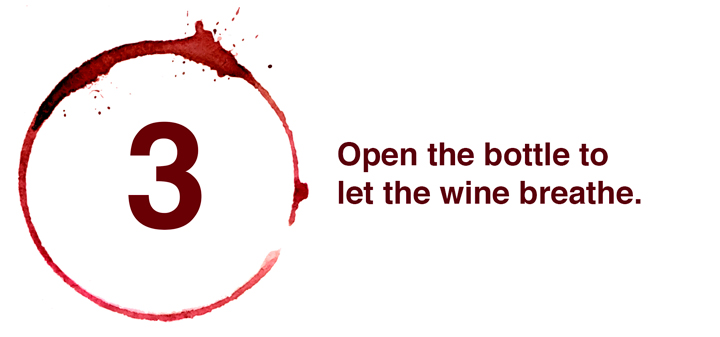
Uncorking a bottle of wine and letting it sit for a period of time is not an effective way to aerate the wine. The narrow neck of the bottle prevents the air from opening up the wine and it would actually serve you better to let the wine breathe in your glass. However, the proper way to aerate the wine is to transfer it to a decanter. The action of pouring wine from a bottle into a decanter does most of the work for you, but depending on the wine you can let it sit from five minutes to a couple hours. To speed up the process, try pouring the wine once or twice between two decanters. You can also swirl the wine in the decanter, as this will increase the ratio of air to wine.
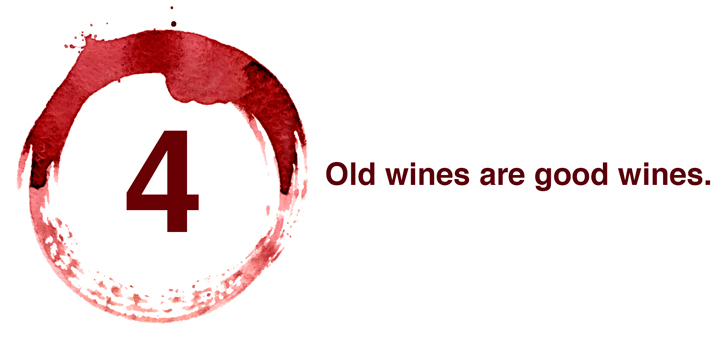
Many people commonly believe that old wines are high quality wines. Although this can be true, it’s not always the case. Wine is perishable and most wines are meant to be enjoyed in the first one to five years of their lives. The vast majority of wines produced don’t have the capability to age for decades, and those that do will only reach their potential if they are stored properly. Wines with concentrated fruits, solid acidity, and structured tannins tend to be the most ageworthy.
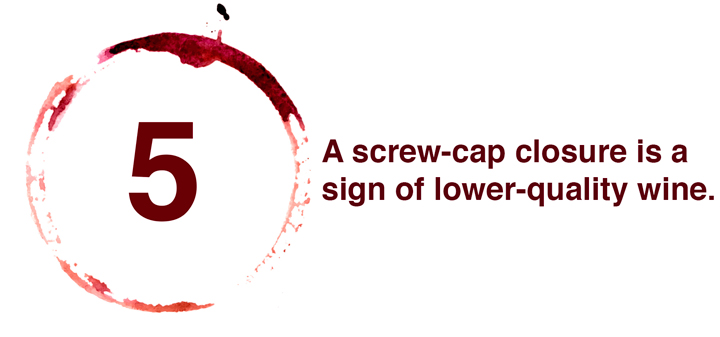
Screw-off caps are often used on large, economy-sized jugs of inexpensive domestic wines and because of this they are commonly associated with lower-quality wine. Sleek, updated versions of the screw-cap have been gaining popularity and are now being used on many bottles of fine wines from all over the world. More and more winemakers have been embracing the screw-cap as an alternative to the traditional cork stopper because the screw-cap keeps the bottle sealed and does not allow oxygen to enter. This ensures that the wine stays crisp and well preserved. It is generally agreed that screw-caps work best for white wines and light reds, as bigger, fuller wines often benefit from a bit of oxygen.
Producers have also been turning to screw-cap closures on bottles as a way of eliminating the problems associated with cork taint. The primary cause of cork taint is the presence of specific chemical compounds (TCA) in the wine, which in many cases will have been transferred from the cork, but which also can have been transferred through the cork.
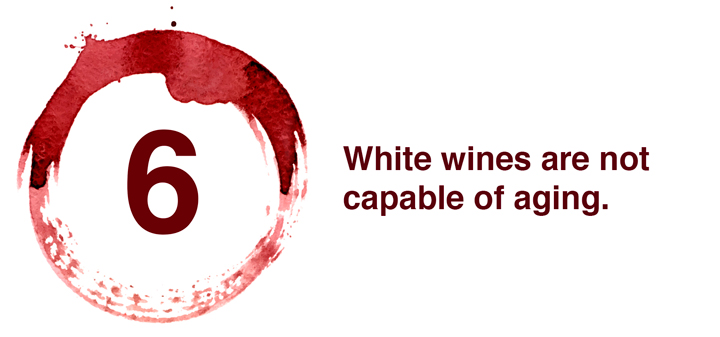
Untrue! Ageworthy reds generally gain longevity from tannins, an astringent substance that most red grape skins impart. On the other hand, white wines are made without the skins and are rarely tannic. However other factors contribute to the aging potential of a wine, including the amount of alcohol, acid, and fruit that is present. As soon as a wine is produced and bottled the aging process begins. A series of complex chemical processes occur, altering the wine’s chemical structure and giving it a different flavor profile, aroma, and mouthfeel from what you might taste in a younger wine. Certain white wines like vintage Champagne, Sauternes, German Rieslings, and top Chardonnays can benefit from aging.
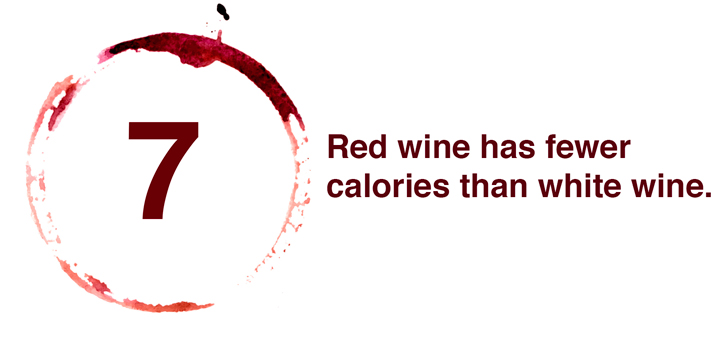
Not always. Calories come from alcohol as well as sugar content. Ounce-for ounce, red wine and white wine have approximately the same amount of carbs and calories and both are very low in sugar. A five-ounce glass of red or white wine has about 125 calories and four to eight grams of carbs.
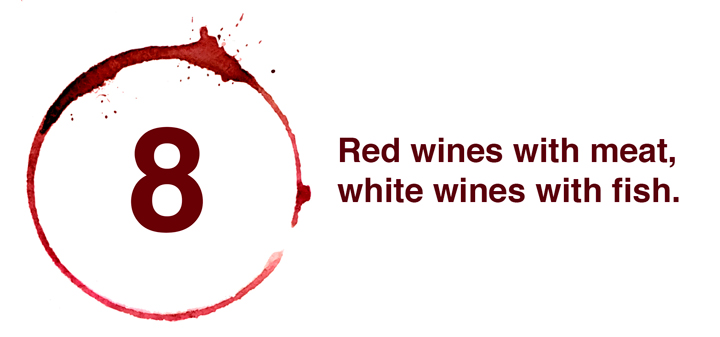
We’ve all heard this age-old guideline for pairing wine with food but it doesn’t have to be a steadfast rule. When matching wine with food, it’s more about personal preference and looking at the intensity of the flavors involved. Indeed a delicate piece of fish might be overpowered by a big Cabernet Sauvignon, but a lighter red like a Beaujolais or a Pinot Noir can work wonderfully with it.
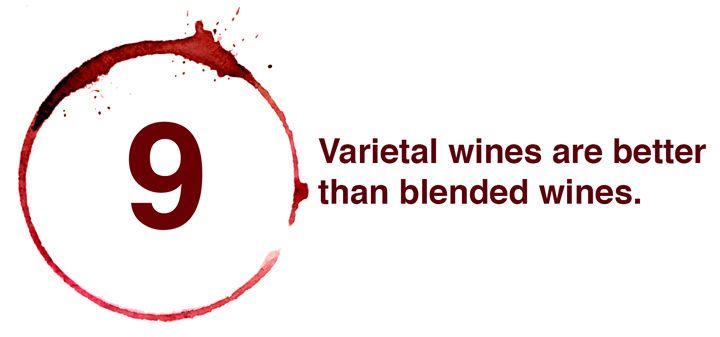
Varietal wines – wines named after a grape variety, such as Chardonnay, Cabernet Sauvignon, Merlot, and Malbec – are no better or worse than other wines. The presence of a grape variety name on the bottle label tells you the dominant grapes used in making the wine and what to expect from the flavor of the wine; it doesn’t tell you about the actual quality of the wine. Just like blended wines, varietal wines range in quality from average to outstanding. Oftentimes when winemakers take one grape and mix it with another grape it can bring out the best attributes of both varieties.
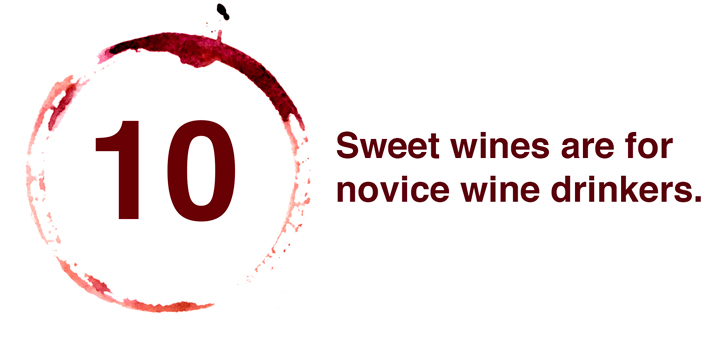
Nope! Some of the world’s greatest wines are sweet. Dessert Rieslings, ice wines, trockenbeerenauslese, and Tokaj can be extremely flavorful and enjoyable wines. Sauternes is considered the King of all sweet wines – it boasts decades of history and distinction and is often extremely expensive.
Know of one that should be on the list? Don't hesitate to add your own wine misconceptions in the comment section below!










